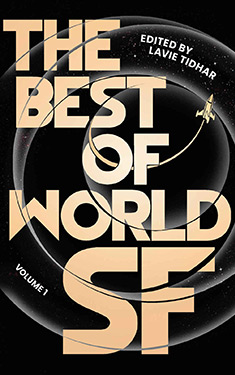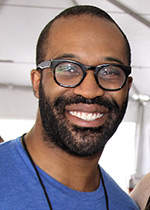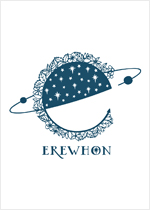
Added By: Slinkyboy
Last Updated: Administrator
The Forgotten Room
| Author: | Lincoln Child |
| Publisher: |
Anchor, 2016 Doubleday, 2015 |
| Series: | Jeremy Logan: Book 4 |
|
1. Deep Storm |
|
| Book Type: | Novel |
| Genre: | Science-Fiction |
| Sub-Genre Tags: | |
| Awards: | |
| Lists: | |
| Links: |
|
| Avg Member Rating: |
|
|
|
|
Synopsis
Professor Jeremy Logan (the quirky and charismatic "enigmologist" who specializes in solving problems of the strange or seemingly supernatural variety) receives an urgent summons from the director of Lux, one of the oldest and most respected think tanks in America. An unexplainable tragedy has taken place in the sprawling compound located on the coastline of Newport, Rhode Island. One of Lux's most distinguished doctors, overcome by erratic behavior, violently attacked his assistant before meeting with a gruesome self-inflicted end. Deeply shaken by the incident and the bizarre evidence left behind from the doctor's final project--as well as recent troubling behavior among several of the think tank's other scientists--Lux fears there is something more sinister occurring within its walls and looks to Jeremy Logan to investigate.
Logan quickly makes a surprising discovery. In a long-dormant wing of the estate, he uncovers an ingeniously hidden secret room, unknown and untouched for decades. The room is essentially a time capsule, filled with eerie machinery and obscure references to a top-secret experiment known as "Project S." As Logan attempts to unravel its meaning, he begins to discern what transpired in that room--and why the frightening project was suddenly abandoned and sealed off many years before. As his work draws him ever deeper into harm's way, Logan soon unleashes a series of catastrophic events upon the rest of Lux... and himself.
Excerpt
1
It was perhaps the most unusual sight ever beheld on the august and stately grounds of the Glasgow Institute of Science, founded in 1761 by grant of charter from George III. A large podium, studded with microphones, had been erected on the Great Lawn, directly in front of the administration building. Before it had been set some three dozen folding chairs, on which sat reporters from local newspapers, the Times of London, Nature magazine, Oceanography, Time, and a host of others. To the right of the podium were two television cameras, one from the BBC and the other from CNN. To the podium's left was a large wooden scaffold, upon which sat a large, strange-looking machine of dark metal: a cross between a cigar tube and a pincushion, about thirty feet long, with a bulky attachment protruding from its upper edge.
The restless chatter among the reporters grew muted as the main doors to the administration building opened and two men stepped out into the September afternoon sunlight. One was plump and short, with a shock of white hair and wearing a thick tweed coat. The other was tall and quite thin, with rather severe features, light brown hair, and alert gray eyes. Unlike the first man, he was dressed in a conservative dark suit.
The two approached the podium and the older man cleared his throat. "Ladies and gentlemen of the press," he began, "thank you for coming. I am Colin Reed, provost of the Glasgow Institute of Science, and to my right is Jeremy Logan."
Reed took a sip from a glass of water on one side of the podium, cleared his throat again. "You may well know of Dr. Logan's work. He is perhaps the only, and certainly the preeminent, enigmalogist operating in the world today. His job is to investigate, interpret, and explain the--for lack of a better word--unexplainable. He throws light upon riddles of history; he separates myth from truth and the natural from the supernatural."
At Reed's side, Jeremy Logan frowned slightly, as if uncomfortable at this bit of panegyric.
"About two months ago, we contacted Dr. Logan on his home ground of Yale University and asked him to undertake an assignment for us. That assignment can be briefly explained: to definitively prove, or disprove, the existence of the creature popularly referred to as the Loch Ness monster. Dr. Logan has spent the last six weeks in Inverness, doing precisely that. I will now ask him to share his findings with you."
Reed stepped back from the microphones and Logan approached. He surveyed the crowd of reporters for a moment, then began to speak. His voice was relatively low and mild, the mid-Atlantic accent contrasting with Reed's Scottish burr.
"The Loch Ness monster," he began, "is the most famous of all the supposed Scottish lake monsters, perhaps the most famous of all cryptids. The institute's aim in hiring me for this particular task was not to stunt the local tourism industry or to put peddlers of Loch Ness iconography out of business. Rather, it was to put a stop to the amateur and misguided attempts at searching for the creature--attempts that have been on the increase recently and, at least twice in the last year, have resulted in deaths by drowning."
He took a sip from his own water glass. "I quickly realized that proving the existence of the creature required only one thing--observing it in its element. Proving that the creature does not exist, however, would require a great deal more work. Technology would be my greatest ally. Hence I persuaded the United States Navy, of which I was once a part, to lend me this one-man research submersible." And Logan waved at the strange-looking machine sitting on the wooden scaffold to his right. "The submersible is equipped with continuous-wave radar, synthetic aperture sonar, pulse-compression echolocating devices, and numerous other technologies for both underwater mapping and target acquisition.
"There were two important factors to take into account. First, the Loch is quite long and unusually deep--seven hundred and fifty feet in places. Second, so-called sightings of the creature suggested a morphology similar to a plesiosaur, which would put it at something between twenty and forty feet in length. There were several unknown variables to contend with, of course, such as the creature's range of movement and environmental preferences, but these could not be determined until such time as it was located.
"I began by familiarizing myself with the features of the submersible and the layout of the loch--both above and below the surface. My service in the navy made the former relatively straightforward. I spent one week in this shakedown period, during which time I uncovered no sign of the creature.
"Next, I had the institute procure for me some netting--rather a lot of netting, in fact. Using spools of military-grade nylon mesh, we put together a net ten thousand feet by eight hundred feet."
This brought murmurs of surprise.
"What came next was rather tedious but--after the first few run-throughs--quite straightforward. I was lucky in the fact that the loch, although some twenty miles long, is not particularly wide: just under two miles at its widest point. We started at the northernmost point of the loch and worked south. My work was aided by two research assistants from the institute and two motor launches out of Inverness. Each day, using the submersible, I would comb an area of the loch consisting of a single mile in a southerly direction. A mile-long slice of the loch, as it were, along the x, y, and z axes. For each of these discrete slices, I would make three separate passes at different depths, using the submersible's movement and targeting technologies to search for any objects the size of the creature. This equipment has significant range and precision; had any object of the requisite size been in the slice, I would have located it. At the end of each day, with the help of the research assistants--one on each shore of the loch--and the two boats on the loch itself, I moved the netting one mile forward, to the terminal point of my search for that day. This vast mesh covered the entire loch laterally, like an antisubmarine net. The mesh was broad enough for any normal fish to swim through without difficulty, but narrow enough to prevent anything larger than forty centimeters wide from passing. Watercraft were dealt with on a one-by-one basis.
"Each day I explored an additional one-mile slice of the loch, searching for the creature. At the end of each day, as mentioned, we pulled the net forward another mile. After twenty days we reached the southern end of the loch--without result. And so, ladies and gentlemen, you can take as fact the four words I'm about to speak--though I speak them with some regret, since I enjoy cryptozoological legends as much as the next man: There ain't no Nessie."
This was greeted with applause, a scattering of laugher.
A low sound became audible in the distance: a droning, repetitive thudding. As the sound drew closer, it became identifiable as helicopter blades cutting through the air. Then a fat chopper with military markings appeared over a nearby hilltop lined with redbrick row houses. It approached quickly now--an American Navy aircraft--then descended, hovering directly over the Great Lawn and the dark gray submersible. Grass flattened out in a circular direction, and the reporters were forced to grab hats and papers to prevent them from flying. A technician in a jumpsuit trotted out a side door of the administration building, climbed up the wooden scaffolding, and attached two huge hooks that were reeled out of the helicopter's belly onto fastenings on the upper surface of the submersible. He crawled back down, gave a thumbs-up, and the helicopter began to rise gingerly, the craft swaying beneath it. Higher and higher it climbed, and then it turned slowly and began heading eastward, its peculiar cargo trailing behind it by the two lifelines. Within sixty seconds it was gone. The entire operation had taken less than five minutes.
Logan watched the distant horizon for a moment, then turned back to the press. "And now," he said, "I would be happy to answer your questions as fully as I can."
Three hours later, in the snug of the Edwardian-era bar within Glasgow's most opulent hotel, the same two persons--Colin Reed and Jeremy Logan--toasted each other over glasses of a peaty single-malt scotch, served neat.
"An excellent performance," Reed was saying. "And I don't just mean at the press conference today--an excellent performance from beginning to end."
"Acting is new to me," Logan replied. "But it's nice to know that, if the ghost-hunting business ever dries up, I can always supplement my Yale salary by treading the boards."
"'I would be happy to answer your questions as fully as I can,'" Reed said, chuckling at the memory. "Nice bit of prevarication, that." He took a sip of his scotch. "Well, I think we can safely say that with today's announcement--in addition to the new rules that have been instituted regarding use of watercraft in the loch--all this hunting for the monster will die off."
"That's the plan."
Reed started, as if forgetting something. "Oh, yes." He reached into his pocket, pulled out a slender envelope. "Here's your stipend."
"I still feel bad taking money from the institute," Logan said as he pocketed the envelope. "But I console myself with the thought that it's recompense for the damage my reputation would suffer should the truth ever become known."
"We thank you--and, more important, I'm sure Nessie thanks you." The provost paused. "You have the, ah, data with you?"
Logan nodded.
"And you still believe the best thing is to destroy it?"
"It's the only option. What if those images got into the open--or, God forbid, went viral on the Internet? It would undo everything we've accomplished. I'll burn them as soon as I get up to my room."
"You're right, of course." Reed hesitated. "May I... may I have one last look?"
"Of course." Logan glanced around the bar, then unlocked the Zero Halliburton attaché case that sat on the banquette beside him, extracted a folder, and passed it to Reed. The man took it, opened it, and leafed through the pages within, his eyes glittering with hungry fascination.
The pages contained images produced from a variety of technologies: acoustic backscatter, synthetic aperture pulse, active beam-forming sonar. The images all showed the same thing, in different positions and from different angles: a creature with a bulky, ovoid body; lateral fins; and a long, slender neck. Reed lingered over the images for a moment. Then, with a rueful sigh, he closed the folder and passed it back to Logan.
Just as Logan was returning it to his attaché case, a man in the hotel's uniform walked up to their table. "Dr. Logan?" he asked.
Logan nodded.
"There's a call for you. It's waiting at the front desk."
Logan frowned. "I'm in the middle of a meeting. Can't it wait?"
The man shook his head. "No, sir. I'm afraid the party on the line said that the matter was urgent. Most urgent."
Copyright © 2015 by Lincoln Child
Reviews
There are currently no reviews for this novel. Be the first to submit one! You must be logged in to submit a review in the BookTrackr section above.
Images
No alternate cover images currently exist for this novel.



















 Full Details
Full Details






